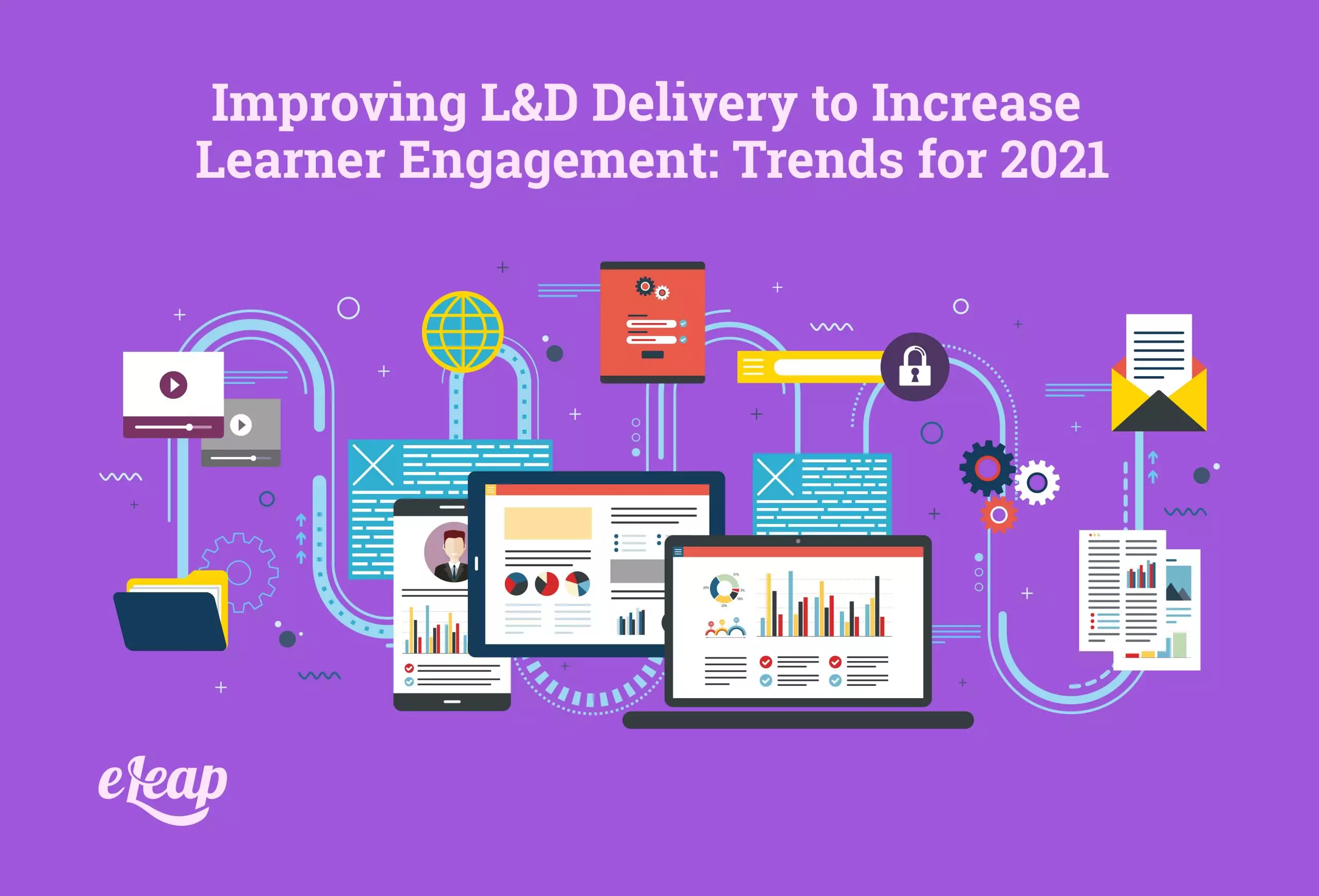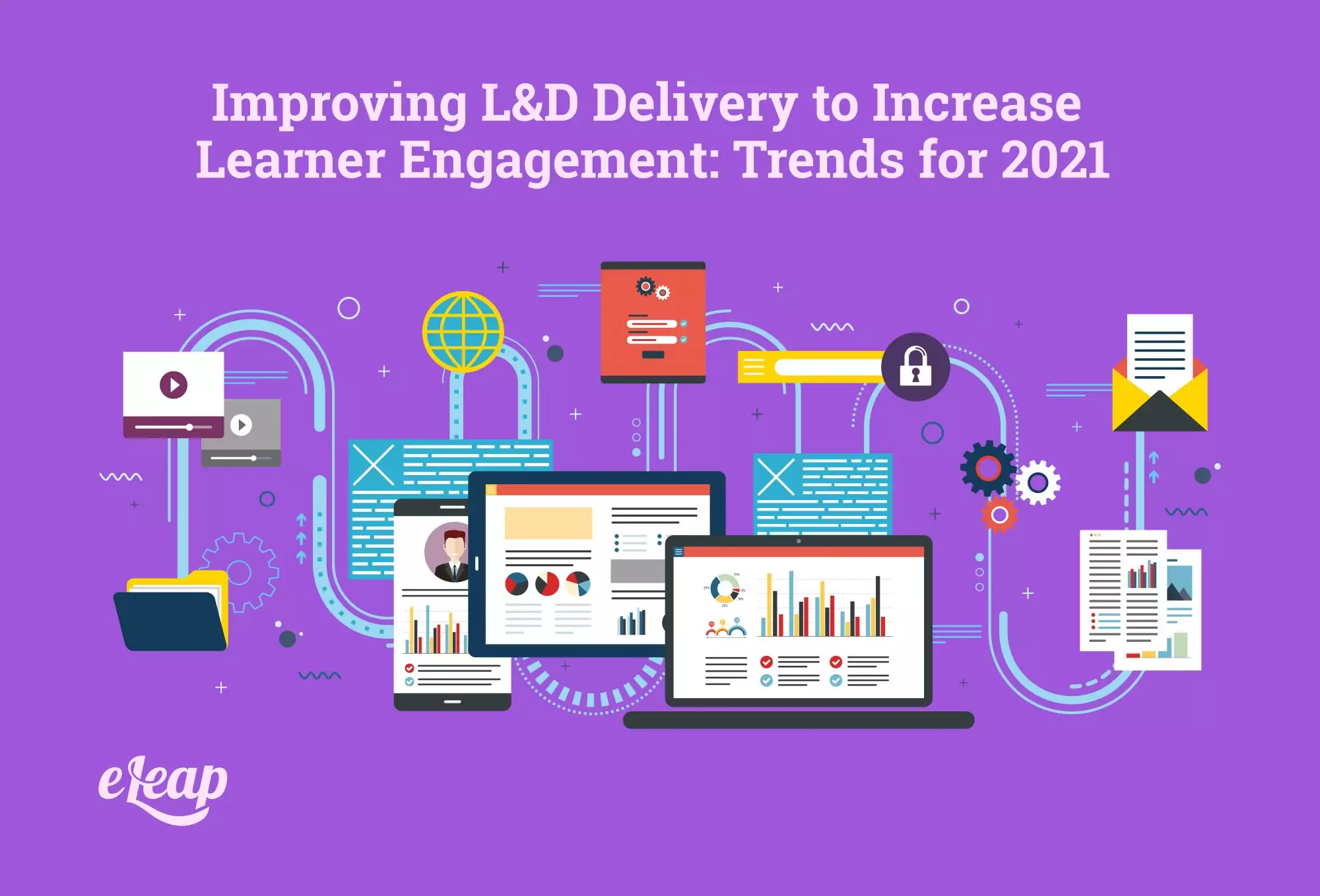Improving L&D Delivery to Increase Learner Engagement: Trends for 2021

Has your L&D engagement dropped with the move to remote work? You’re not alone. In fact, that lack of direct connection is one of the largest problems for learning and development initiatives around the world. Learner engagement has always been a great challenge for many organizations around the globe.

Humans are social animals, and we are designed to learn from one another. We do so in an amazing range of ways, most of which are unconscious. While remote work might be great for productivity and even control over individual schedules, it does present a challenge simply because we lack that face-to-face interaction during learning.
The good news is that emerging trends promise to help change the paradigm. Each of the trends discussed in this post provide the means to increase learner engagement, improve information retention, and build L&D success.
It’s All about the Journey
One of the most important L&D trends today is the shift away from learning events to focusing on the learning journey. To be clear, this is something that should have been the norm from the beginning, because events do not equate to learning. However, with the increasing disengagement of remote learners, decision-makers are realizing just how important it is to take a bigger picture approach.
What is the difference, you ask? Simply this: an event is a time-bound thing. It delivers training but does not necessarily result in learning. A webinar is an event. An online module can be an event.
On the other hand, the journey encompasses everything the learner does with a focus on a final destination. For instance, completing a college degree program is not about going to class or passing exams so much as it is about mastering the knowledge necessary to earn a degree and be recognized as having achieved something meaningful. When you focus on learner journeys instead of on training events, it becomes easier to engage your people and deliver improved experiences.
Remember this: it is not about teaching information. It is about the learner absorbing knowledge. The two are not the same.
Just-in-Time-Training
Often, training is provided well before an employee needs to know something. That works fine with many areas of learning, including mandatory corporate training, continuing education, and the like. However, there are areas where it leads to disengagement and poor outcomes, including employees forgetting what they have learned if training took place too far ahead of time. Just-in-time training helps overcome those hurdles.
This type of training is well-suited for a variety of needs and can be done in many different ways. For instance, knowledge bases and wikis offer the ability for employees to find information as they need it, ensuring that there is no disconnect between learning and application of that knowledge.
Competencies Training
Did you know that most employees report that they would feel more engaged in the business if they had access to competencies training? Once, that was hard to achieve, but today’s learning management systems (LMSs) make it simple to track compliance training and build competencies across the board. However, you do need to ensure that you have a modern, cloud-based LMS and that your content is up to the task.
Of course, there is a challenge here – determining which competencies to train for. In the past, these decisions were largely predicated on organization needs and implemented from the top down. While that might have once been acceptable, today it only further degrades learner engagement. Instead of a top-down approach, take a bottom-up strategy.
Work with employees to determine what they want and need to learn. What competencies do they need to build to be more effective in their current roles? What skills do they feel would make them more valuable to their team? To the department? To the organization?
Do not stop there, either. What competencies do your employees want to build so that they can progress in their careers? Answer those questions and then start building learner journeys with a focus on laddered competency training.
Get Them Together
As mentioned previously, humans are social animals hardwired to learn from one another. We now have the technology to enable that sort of situation even for remote workers and learners. Social media is a great example of how people can come together to share and learn collaboratively, even without face-to-face interaction.
How can organizations tap into this trend? Many options exist, from creating user forums where learners can ask questions, share information, and come together to using actual social media platforms like Facebook. However, be prepared for some resistance here, particularly if you have not done much in the way of collaborative work in the past.
Take your time. Introduce your learners to the platform and capabilities. Make sure that your expectations are clear. Most of all, have patience and keep bringing your teams back to the collaborative tools available. Eventually, you’ll build a culture that values digital interaction, socialization, and collaborative learning. Hence, increasing learner engagement.
Connect ROI to Learning
As an L&D professional, you understand the importance of measuring learner progress and success. However, conveying value through measurement can be hard to do, which often leaves the C-suite wondering just what value L&D really brings to the table. The good news is that with a modern LMS, you can transcend measurement and delve into learner analytics.
With analytics tracking it becomes possible to connect ROI with learning – you can pinpoint what learning led to what achievements and then tie that into revenue or savings. That is the language that the C-suite speaks. With in-depth analytics, it becomes possible to do more than merely justify learning and development. You can prove the immense value that it offers.
A Changing Landscape
We’ve covered some of the most important trends and capabilities that are shaping L&D for 2021 and beyond. With these tips, you can create engaging experiences that drive optimum outcomes for your learners even if they are still learning from home. Not only that, but you can prove the ROI offered by L&D, encouraging even greater investments and further growth in the future.